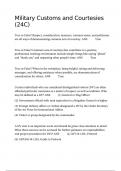Samenvatting
Summary Molecular and Cellular Neurobiology
This summary includes everything you need to know to pass your test! It includes the information from the lectures and also some extra information that I've read from the papers that were recommended. The information is supported by explanatory figures and tables. I passed the exam in the first ...
[Meer zien]













